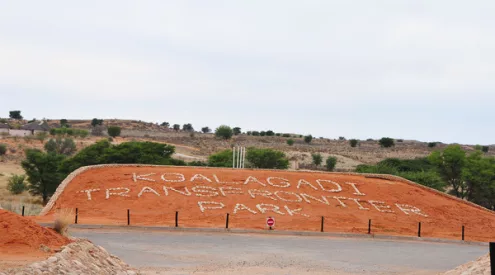Earlier this month, on 2 July, there was a total solar eclipse visible from South America. As solar and lunar eclipses follow after one another, it’s not surprising that there’ll be a partial lunar eclipse on 16 July, which will be visible in South Africa.
This eclipse has a rather extravagant moniker – it’s called a Half-Blood Thunder Moon Eclipse.
A Blood Moon is the term given to a full lunar eclipse and so it’s stands to reason that a Half-Blood Moon is just a fancy way of saying a partial lunar eclipse. A Thunder Moon refers to any Full Moon in July and according to NASA the name stems from the ‘early summer’s frequent thunderstorms’ in North America. So, a Half-Blood Thunder Moon Eclipse is essentially a partial eclipse when it’s Full Moon in July.

‘Solar eclipses and lunar eclipses occur in pairs,’ said Dr. Paige Godfrey, an astrophysicist at Slooh, speaking to Forbes. Slooh is a network of online telescopes positioned all over the world – by the end of 2019 it will have 17 online telescopes on three continents.
Because Cape Town is expected to be cloudy tonight, the eclipse may not be visible there, however clear skies are predicted for Joburg, Pretoria, Durban and Bloemfontein. If clouds get in the way, or you don’t fancy making your way outside in the cold, Slooh will be streaming the eclipse live online from 8.40pm (6.40pm UCT) on 16 July.
‘A solar eclipse occurs during a new moon, when the Moon passes between the Earth and the Sun [while] a lunar eclipse occurs two weeks before or after during a full moon, when the Moon moves behind Earth into its shadow,’ said Godfrey. ‘Many cosmic coincidences must align for this celestial phenomenon to occur. It’s a game of orbital hide and seek.’
According to timeanddate.com, which will also be streaming the event, tonight’s partial lunar eclipse will begin at 10.01pm with the maximum eclipse occurring at 11.30pm. During this eclipse, the Earth’s shadow will cover only part of the Moon. ‘There are no other locations on Earth where the Moon appears completely covered during this event.’ Although those in North America will be able to see the eclipse, we in the southern hemisphere will have a better view of the celestial phenomenon.
Image: Pixabay
Also see: PICTURES: The total solar eclipse as seen from South America
















